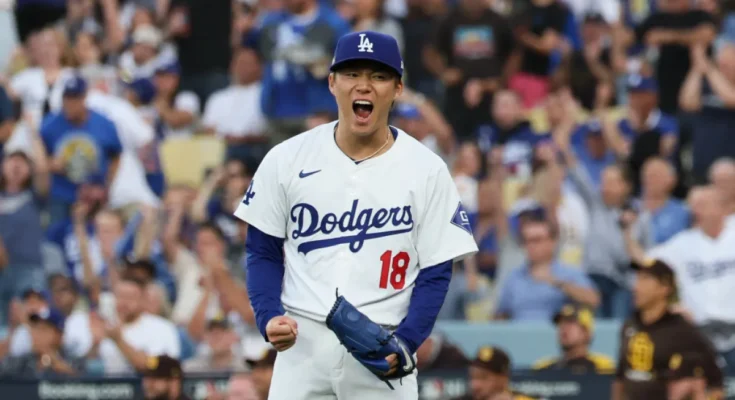Dodgers’ Free Fall Accelerates: Injuries, Slumping Stars, and Rising Division Rivals Threaten Los Angeles’ Once-Dominant National League Position
The Los Angeles Dodgers, once the unshakable powerhouse of the National League West, are experiencing a startling decline that has left fans and analysts alike questioning the team’s future trajectory. After years of dominating the division and consistently reaching the postseason, the Dodgers now find themselves in uncharted waters, struggling to maintain the dominance that became a hallmark of Dave Roberts’ tenure as manager. What once seemed like a well-oiled machine is now showing cracks, with injuries, slumping stars, and emerging competitors contributing to a narrative of decline.
Central to the Dodgers’ challenges is the health of their roster. Injuries have struck key players at crucial moments, disrupting lineup consistency and forcing the team to rely on backups and untested talent. Pitchers who were once considered the foundation of a championship rotation have spent significant time on the injured list, leaving the bullpen overextended and the rotation vulnerable. The domino effect of these setbacks has been evident, with close games slipping away and long winning streaks proving difficult to sustain.
Offensively, the Dodgers have experienced unexpected slumps from some of their most reliable hitters. Mookie Betts, whose presence at the plate has long been a stabilizing factor, has struggled to find consistent rhythm, impacting run production and overall team morale. Freddie Freeman, another cornerstone of the lineup, has faced intermittent challenges that have further strained offensive output. When veteran stars falter simultaneously, the pressure on younger or less experienced players intensifies, often exposing weaknesses in depth and adaptability.
The bullpen, historically one of the Dodgers’ strengths, has also been a point of concern. Late-inning collapses and inconsistent performances from relievers have cost the team crucial victories. Analysts note that over-reliance on struggling arms creates a feedback loop where stress and pressure compound, leading to further inconsistency. With the playoffs always looming as a goal, the inability to close out games efficiently could prove disastrous for Los Angeles.
Compounding these internal issues is the rise of division rivals, particularly the San Diego Padres. The Padres’ young core, fortified by high-profile acquisitions, has demonstrated resilience and adaptability that threaten to upend the Dodgers’ longstanding supremacy. Juan Soto and other emerging stars provide a dynamic offensive and defensive presence that has allowed San Diego to capitalize on the Dodgers’ inconsistencies. Frequent matchups between the teams serve as crucial pivot points in the standings, and even a brief losing streak can dramatically shift momentum.
Advanced metrics also paint a concerning picture for the Dodgers. Statistical indicators such as defensive runs saved, bullpen efficiency, and overall team WAR suggest that Los Angeles is underperforming relative to expectations. While these numbers do not dictate outcomes, they do highlight systemic issues that, if unaddressed, could extend the team’s struggles deeper into the season. Analysts argue that without strategic adjustments and a resurgence from key contributors, the Dodgers’ hold on the division is far from guaranteed.
Managerial decisions and team psychology are additional factors influencing the Dodgers’ free fall. Dave Roberts, despite his prior success, faces unprecedented challenges in keeping the roster motivated and cohesive. High expectations from both fans and the media amplify scrutiny, and even minor missteps are magnified in a season where every game carries heightened significance. Meanwhile, the Padres and other rivals have cultivated a culture of confidence and resilience, enabling them to exploit Los Angeles’ vulnerabilities more effectively.
The impact of this decline extends beyond standings and statistics; it resonates with the fanbase that has grown accustomed to success. Ticket sales, public perception, and overall morale are subtly affected when a dominant franchise falters, even temporarily. This pressure, combined with the tangible challenges on the field, creates an environment where the Dodgers must perform at peak levels simply to maintain relevance within their own division.
Looking ahead, the Dodgers face a series of critical junctures that will determine whether this free fall is temporary or the start of a longer-term shift in the National League West. Health management, pitching adjustments, and the resurgence of slumping stars will all play pivotal roles. Additionally, the team’s ability to respond to the strategic moves of the Padres and other emerging contenders will test both managerial acumen and organizational depth.
Ultimately, the Dodgers’ current struggles serve as a stark reminder that in baseball, no dynasty is immune to adversity. Even teams with storied histories, deep pockets, and abundant talent can find themselves on precarious footing when injuries, slumps, and competition converge. For now, Los Angeles remains in a precarious position, facing a season that will challenge not only its roster but the very foundation of its dominance in the National League West. The road ahead is uncertain, and fans can only hope that the Dodgers will find the resilience and adjustments needed to halt this alarming free fall before it reshapes the division entirely.



